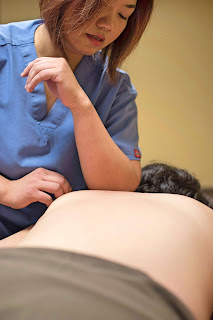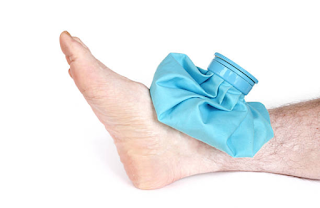One side of the argument says that you should be relaxing during a massage, so that means be quiet, listen to calm, quiet music, and just mentally let yourself enjoy the quiet to allow yourself to relax. The other side of the argument says some friendly banter allows the person receiving the massage to ask questions and get educated about things going on with their body, and can also be a form of relaxation therapy in itself by allowing the client to expend any pent up energy, frustrations, or just basically having someone to talk to.
Sometimes the technique itself can work better if there is talking versus no talking. Cranial Sacral or Myofascial work is more effective when the therapist can quietly concentrate on the sensitive and intricate things they are working on, while something like stretching or deep tissue work might require communication between therapist and client to make sure that the modality is working and not too much, as well as some conversation about what caused the issue in the first place.
I have seen forums and routine questions throughout the massage industry about what other therapists think of this topic. I've seen answers that range from therapists who find it fine to be sociable and chatty, while others state that they prefer to work in silence and have gone as far as to gently tell chatty clients to be silent 'for their own relaxation benefits'. There are also factors such as the environment or the rapport of the staff that can influence whether talking is discouraged or encouraged during a massage.
Personally, as a therapist, I believe that it is ultimately up to my client - the person receiving the massage. After all, they are the ones coming to me for relief, healing, relaxation, or whatever their reason. I should allow them to achieve their goals however they need to. Some people do want the silent, quiet relaxation, and it can be a calming, almost meditative session that lets them fall asleep and me to put extreme focus on what I'm doing. Other times, people will ask questions, vent frustrations, relate plans they are excited about, etc. I used to wonder how they were able to relax while being so chatty, but I realized that perhaps they don't have anyone else to talk to so they need an outlet to vent or just enjoy speaking to another adult before they can unwind. In these cases, the talking is therapeutic and relaxing in itself, so I don't discourage it. I do, however, strive to let them lead the conversation or lack of it. The only time I usually try to initiate conversation is when I'm either asking about conditions, giving instructions, or reassuring a fear or concern. I work with many Prenatal clients, and many first-time moms can get concerned with all the strange things that are happening to their bodies, so sometimes I need to reassure them and will sometimes tell them about my own experiences in the same situation to help put their minds at ease and give them a chance to relax.
That being said, I do believe the answer of "to talk or not to talk" is up to the person receiving the massage, and what their goals of receiving the massage are. Sometimes quiet silence is needed and wanted, and sometimes chatting, venting, or letting off steam is just as important to their relaxation and healing. If my client wants to talk, I'll talk, but if they want to be quiet and go to sleep, I'm not going to engage them in deep conversation. I'm there to provide my clients with what they want and need, and everyone's wants and needs are different but no less right or wrong.





























